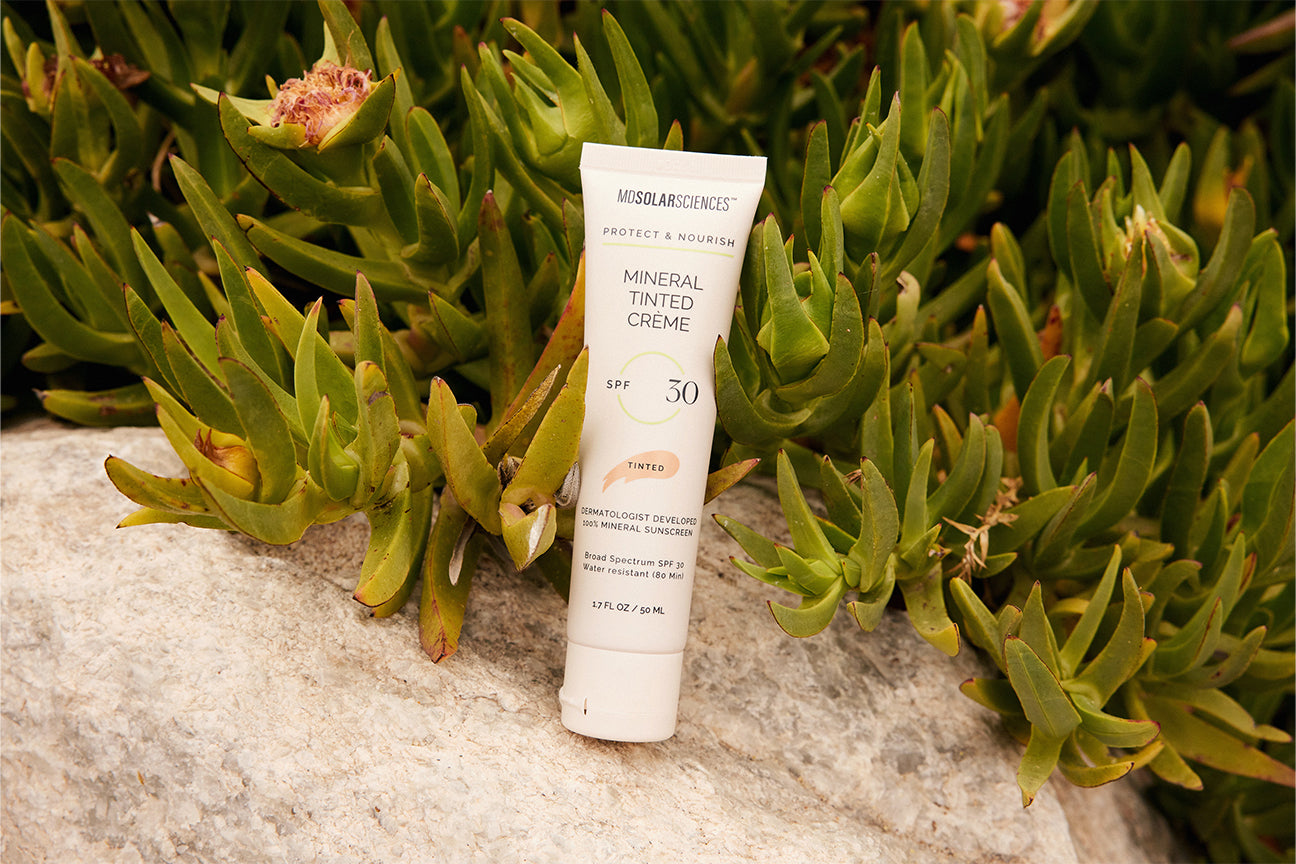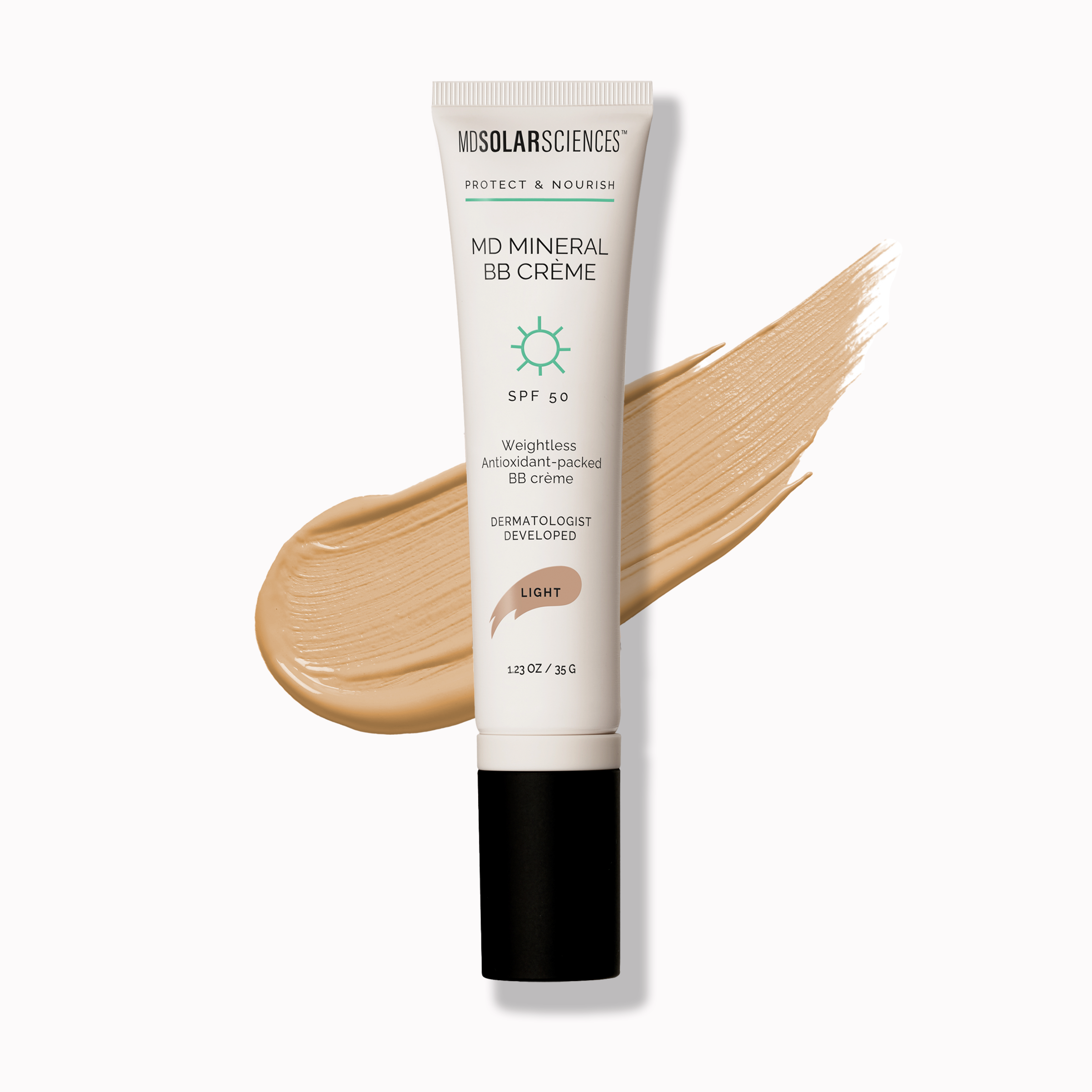Educate Yourself and Choose the Best Sunscreens to Protect Your Skin and Our Ecosystems.
Warmer weather is finally here! Time for some fun in the sun and beach days galore! While SPF should be part of your daily skincare regimen, we know that most people only pull out the sunscreen in the warmer months. Which means, it’s probably time to refresh your sun care collection (yes, sunscreen does expire, check this blog! ). However, before you do, consider this: Did you know that certain chemicals in sunscreens are toxic to coral reefs and other marine life?

It’s estimated that approximately 14,000 tons of sunscreen end up in coral reefs per year causing impactful and irreversible damage. Coral reefs aren’t just home to hundreds of species, they also help reduce climate change by regulating carbon dioxide levels in the ocean, stabilize the ocean floor, filter and clean sea water, plus prevent coastal erosion and storm surge damage. Sunscreen pollution can also impact marine life by decreasing fertility in fish, causing defects in shellfish and impairing growth of green algae.
Several states and islands, including Hawaii, Aruba and the U.S. Virgin Islands, prohibit the use and sale of these sunscreens in an effort to protect our oceans and marine life. But the ocean is vast, making up 71% of Earth’s surface, which leaves a lot of the responsibility up to us and you.
Choosing the right sunscreen might seem like a simple task, but it isn’t just about protecting your skin – it’s also about protecting our oceans and aquatic life.
HOW TO CHOOSE THE BEST ECO-FRIENDLY, REEF-SAFE SUNSCREEN
The term “reef-safe” is not a regulated label you can always trust. That’s why it’s important to look out for certain ingredients and attributes to ensure you make an educated SPF choice. Here’s where to start:
Always choose oxybenzone-free and octinoxate-free formulas
Oxybenzone and octinoxate are two commonly used active ingredients in chemical sunscreens because they’re great at absorbing harmful UV rays to protect your skin. Unfortunately, though, they’re not reef-friendly and are known to cause serious damage to coral reefs, aquatic life and even water quality. You can see the list of Active Ingredients on the back of your SPF carton or tube, in the Drug Facts box.
It’s okay if you prefer chemical SPF, just make sure to check the ingredients label and always choose oxybenzone-free and octinoxate-free. While we’re at it, here are other reef-harming ingredients to avoid: PABA, parabens, triclosan, and camphor.
Consider 100% mineral SPF
An alternative to traditional chemical sunscreens, these formulas can be better for our oceans, and our environment. In order for sunscreen to be considered 100% mineral, it can only contain two active ingredients: zinc oxide and titanium dioxide. Neither of which are linked to coral bleaching.
For more information on mineral sunscreens, check out this blog.
If you choose mineral SPF, make sure it's a “non-nano” formula
Mineral formulas come in two variations: nanoparticles and non-nanoparticles. Nano size particles can be ingested by coral reefs or absorbed by your skin. Non-nano formulas have a greater particle size that cannot be ingested by coral reefs, and stays on top of the skin..
Broad-spectrum protection is a must
Make sure your sunscreen provides broad-spectrum protection, which means it protects against both UVA (aging) and UVB (burning) rays. Additionally, never consider anything less than SPF 30 as this is the minimum required to ensure you’re adequately protected. (All of our SPF formulas were developed to provide broad-spectrum protection and come in SPF 30, 40 and 50 options!)

Go for water-resistant sunscreen
These are formulated to stay on the skin when it gets wet, whether you are swimming or sweating. They typically last up to 80 minutes in the water, which means less of it will wash off in the ocean. Water-resistant sunscreens, like ours, will keep your skin protected longer, yet, as a rule, you should reapply every 2 hours for maximum protection.
Look for recyclable SPF packaging
As we all know, marine life doesn’t just have a sunscreen pollution problem, it also has a plastic problem. Go the extra step on your SPF hunt by choosing sustainable packaging. Look for anything that’s reusable, biodegradable or fully recyclable. As of 2021, ALL of our packaging is fully recyclable!

Wear more UPF clothing
A simple way to cut back on sunscreen pollution? Wear less in the ocean! This is not to say that you should go unprotected. Instead, opt for UPF clothing and other sun protective gear (i.e., sunglasses, hats, etc.) that can provide the majority of the protection for your skin. That way there’s less surface area that requires SPF. Check out UVSkinz for some great options.
WE MAKE CHOOSING SAFE SUNSCREEN EASY
MDSolarSciences™ is committed to offering clean, sustainable chemical and mineral formulas. Ours are made with EcoCert, or organically-certified, Zinc Oxide. We do not use PABA, oxybenzone, parabens or octinoxate. All of our SPF formulas carry the Skin Cancer Foundation seal of approval and these formulas are gentle enough for children 6 months or older, and adults.
And, of course, our sun care is reef-safe, cruelty-free and several products in our collection are top EWG-rated by the Environmental Working Group, an organization dedicated to protecting human health and the environment. We are committed to helping preserve our fragile marine ecosystems as well as skin health for you and your loved ones!
Check out our reef-friendly SPF here.
For more information about our commitment to sustainability, check our Sustainability Report Blog.
The best thing you can do for our ecosystem? Be an advocate! Educate yourself, and others, about the importance of using reef-safe sunscreens as part of saving our marine environment. Visit websites like theoceanagency.org, seasave.org or savethereef.org for more information and resources.







